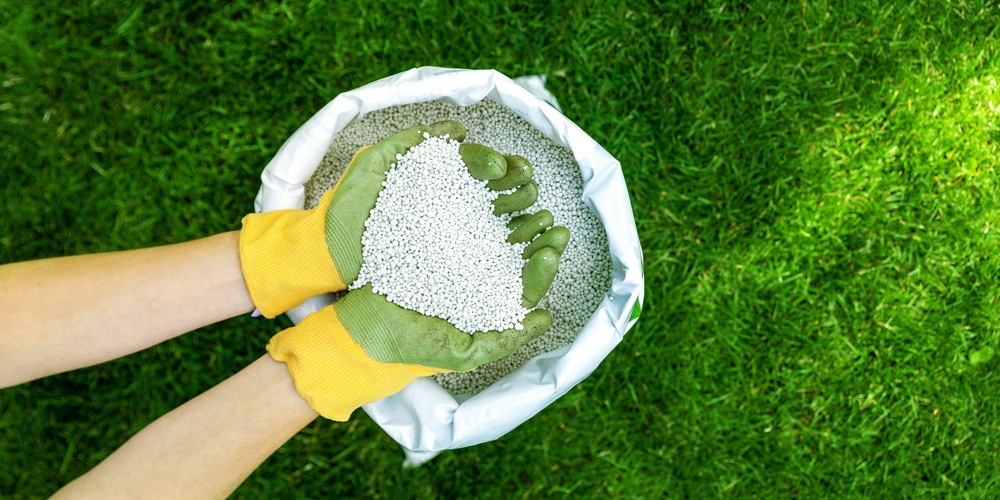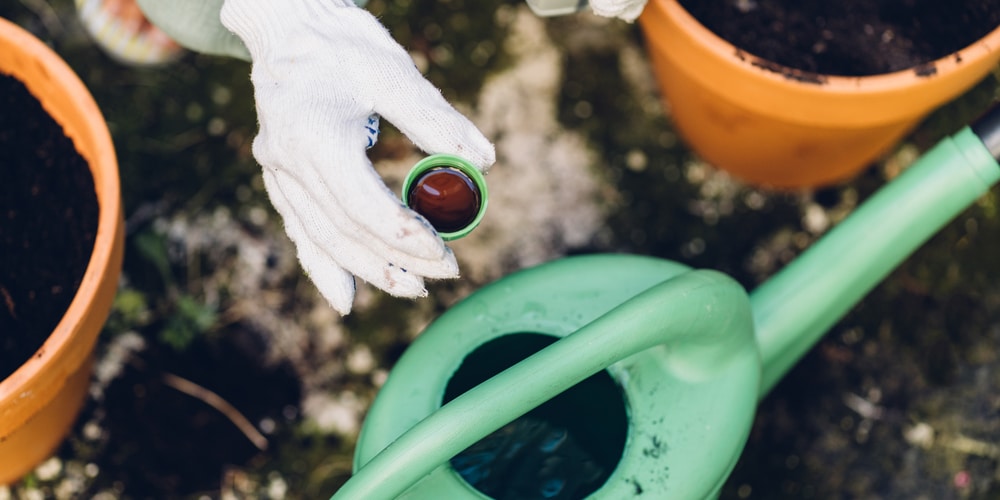There are numerous lawn care practices, some of which are more common and standardized than others. While there’s one main goal most people hope to achieve with their lawns – a lush, green space – methods for achieving that goal may differ.
One method often mentioned when discussing lawn care is “spoon feeding.” What is it, and should you do it? Let’s take a closer look.
What is Spoon Feeding Lawn?

Spoon feeding lawn is adding small amounts of fertilizer to your lawn regularly, instead of giving it one large dosage all at once. This practice has been around for a while, and some people swear by it as an effective means of keeping their lawn healthy.
By feeding the turf more frequently, you’re essentially giving it a more consistent supply of nutrients, which can help it stay strong and prevent it from becoming unhealthy. Like other standardized fertilizing practices, this method can be done throughout the season or several times during the growing season.
The idea behind spoon feeding is that small, regular doses of fertilizer help with the slow penetration and uptake of nutrients. It’s been said that this method can help reduce the amount of fertilizer that’s wasted, as well as decrease the risk of fertilizer burn and similar problems.
Benefits of Lawn Spoon Feeding: Should You Do It?
With that being said, is spoon feeding your lawn worth the effort? Let’s take a look at some of the benefits:
- Helps reduce problems with fertilizer burn.
- Fewer amounts of fertilizer are wasted.
- Helps improve the appearance of your lawn.
- Gives the turn a more consistent supply of nutrients.
- Gives growers less time worrying about excessive top growth.
- More efficient nutrient uptake.
- Deliver more nutrients without causing too much stress to the turf
There are a few potential downsides to this method, such as the need for more time and effort, as well as the possibility of over-fertilizing if not done correctly. Overall, though, spoon-feeding lawns can be a beneficial practice.
Things to Remember Before Lawn Spoon Feeding
The benefits of doing this method are relatively clear, but there are still a few things you should remember before starting.
Choose the Correct Fertilizer Type
This is probably the most challenging part of spoon feeding your lawn. Because you’ll do this more frequently with little to no fertilizer waste, you need to be more careful with the type of fertilizer you choose.
Slow-release and organic fertilizer types are always popular because they’re gentle and have little to no risk of burning your lawn.
Organic fertilizers, in particular, are slowly absorbed by the soil, which is perfect for spoon feeding since you don’t want to overwhelm your turf with nutrients all at once.
Test Your Soil First
You should always test your soil before starting any fertilizer regimen – spoon feeding included.
This is important because you need to know what your turf is lacking before you start adding anything. By testing your soil, you can find out which nutrients it needs more and adjust your fertilizer accordingly.
For example, if your test results show that your lawn has a high nitrogen content, then fertilizer with a less nitrogen ratio would be ideal.
You’ll find different fertilizer ratios depending on the brand or type you choose. Most of the time, you’ll find yourself calculating the N-P-K value, which is the amount of nitrogen (N), phosphorus (P), and potassium (K) in the fertilizer.
Don’t Overdo It and Be Consistent with Your Fertilization Schedule
This is probably the most important tip on this entire list. It’s very easy to get excited about lawn care and start spoon feeding your turf more than necessary.
Remember, the goal is to add a small amount of fertilizer regularly, not douse your lawn with it. A little goes a long way, so don’t overdo it!
Use the Right Tools
Using the right tools will make your life a lot easier and help you avoid any potential problems.
For example, using a fertilizer spreader ensures that the fertilizer is evenly distributed across your lawn. This is important because you don’t want to end up with patchy areas of over-fertilized or under-fertilized grass.
You should also consider using a soil probe to help you measure the depth of your fertilizer applications. This helps you avoid applying too much or too little fertilizer, which can both be problematic.
What is Spoon Feeding Lawn: Final Thoughts
Overall, spoon feeding your lawn offers multiple benefits that make it worth the effort. Just remember to be careful with the type of fertilizer you choose and how much you apply.
Related Article: Does Weed and Feed Kill Bees?

